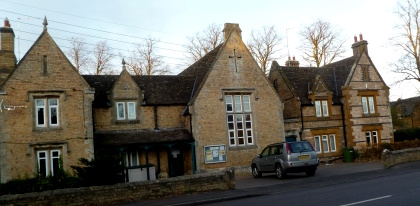|
News for the Pews |

Home

14th June 2024
FridayReflection
************************
Kelly Bagdanov
Extracts from an article
Sistine Chapel ceiling
************************
Artists like Michelangelo and Leonardo da Vinci used their exceptional talents to create works that inspire awe and devotion, blending themes of Faith in God with incredible artistic skill.
One of the most striking examples of Michelangelo is the Sistine Chapel ceiling, where the stories of Genesis unfold in a series of breathtaking frescoes.
These works not only reflect the artist's genius but also the central themes of the Christian faith.
They remind us of the creation, the fall of man, and the promise of redemption through Christ Jesus.
(Copyright © Carl Brettle.)
Extracts from an article by (Kelly Bagdanov)
Before his death Michelangelo burned all of his notes, cartoons, and other documentation that might have given us definitive answers about his art.
This leaves us free to speculate on some of the odd details that he chose to include in the Sistine Ceiling.
We certainly have clues, and many scholars have posited theories, but I would encourage you to let your imagination go and to explore the ceiling with curiosity and wonder.
At just 13 years of age Michelangelo was brought into the palace of the Medici in Florence and here he would be exposed to some of the greatest philosophers, theologians, poets, and artists of his day.
One can only dream of the conversations that surrounded the young Michelangelo as his agile and creative mind was challenged during these formative years.
We also know that Michelangelo was exposed to the teaching of the esoteric discipline of the Kabbalah.
Kabbalah is a mystical Jewish school of thought.
Michelangelo's extensive exploration of Old Testament themes in his art, particularly in the Sistine Ceiling, provides proof that respect for Judaic teachings heavily influenced and informed the artist's understanding of his own Christian faith.
When Michelangelo began to conceive of his ceiling, he was not working within a blank chapel.
The walls of the Sistine Chapel already had two art cycles on the walls.
On the South wall of the chapel, we have a series of frescoes that explore the Life of Moses.
On the North wall, we have a series that explores the life of Christ.
The Sistine Chapel is built according to the description of Solomon's temple in the Hebrew Scriptures.
The temple was built during the reign of King Solomon on the Temple Mount in Jerusalem.
Solomon's temple was destroyed by the Babylonian king Nebuchadnezzar.
The Hebrew Bible in the Book of Kings includes a detailed description of the temple, including the Holy of Holies.
Julius II conceived of a plan to paint the Sistine Ceiling with portraits of the 12 apostles, then to fill in the open spaces with geometric ornamentation.
Eager to elevate the glory and power of the Papacy, it makes sense that Julius would want to see the apostles in essence, 'over' everything else in the chapel.
When called to paint the Sistine Ceiling, Michelangelo was already deep into another project for the Pope, designing his tomb and the 40 sculptures that would adorn it.
The tomb had a complex schematic, and the potential to be the greatest achievement of Michelangelo's artistic life.
Michelangelo was crushed when forced to abandon that project to paint.
Therefore, it is not surprising that elements from the tomb made their way into Michelangelo's schematic for the ceiling.
A melding of ancient classical elements and Old Testament stories provided Michelangelo with a wealth of material.
There are 9 central panels that march down the centre of the ceiling.
These tell the main stories from the book of Genesis, the first book of the Bible: Creation, the fall of man, and the story of Noah.
These central frescoes give the backstory for the rest of the chapel.
Jesus came to the earth to save humankind,
and the story of people's need for salvation is explained in the ceiling narrative.
(All rights reserved Kelly Bagdanov © 2024)
><(((°>
Kelly Bagdanov
I love art history because exposure to art develops empathy, hones critical thinking, connects disciplines, encourages curiosity and creates better students.
Running a private school that catered to the homeschooling community for 20 years reinforced my belief in education as critical, not just for success in a career or vocation, but for success as a human being who enjoys life, appreciates beauty, and contributes.
As a wife, mom, grandmother, educator, art lover, mentor, homeschool advocate, speaker, and writer, I work to live out my faith in an authentic way.
I value kindness, loyalty, honesty, and curiosity and hope that my work here will lead to a more compassionate community and world.

Contact the Rector
The Revd.
Nic.Edwards
The Rectory,
Church Lane,
BUGBROOKE,
Northampton,
NN7 3PB
Land Line: 01604 - 815496
(Can be accessed from the mobile device)
Mobile: .....
E-mail:
thebeneficeofbhkandr at gmail dot com
Contact the Benefice Office
Sunday School Rooms, Church Lane,
BUGBROOKE, Northampton, NN7 3PB
Land Line: 01604 830373
E-mail:
thebeneficeofbhkandr at gmail dot com
Mon., Tues., Wed,, Thur., Fri.
9:00am to 11:30am

For Baptism bookings (Christenings)
to arrange an appointment please contact
the Benefice Office.
For Wedding bookings:
please contact the Benefice Office to arrange
an appointment.
Who Made This?
Seeing as you asked, if you can give helpful
advice or report factual corrections and
'deliberate mistakes',email:-
regparker3 at gmail dot com
Email addresses shown using words in an
attempt to avoid 'spam',
Type the email address replacing 'at' with '@',
and 'dot' with '.'
|



